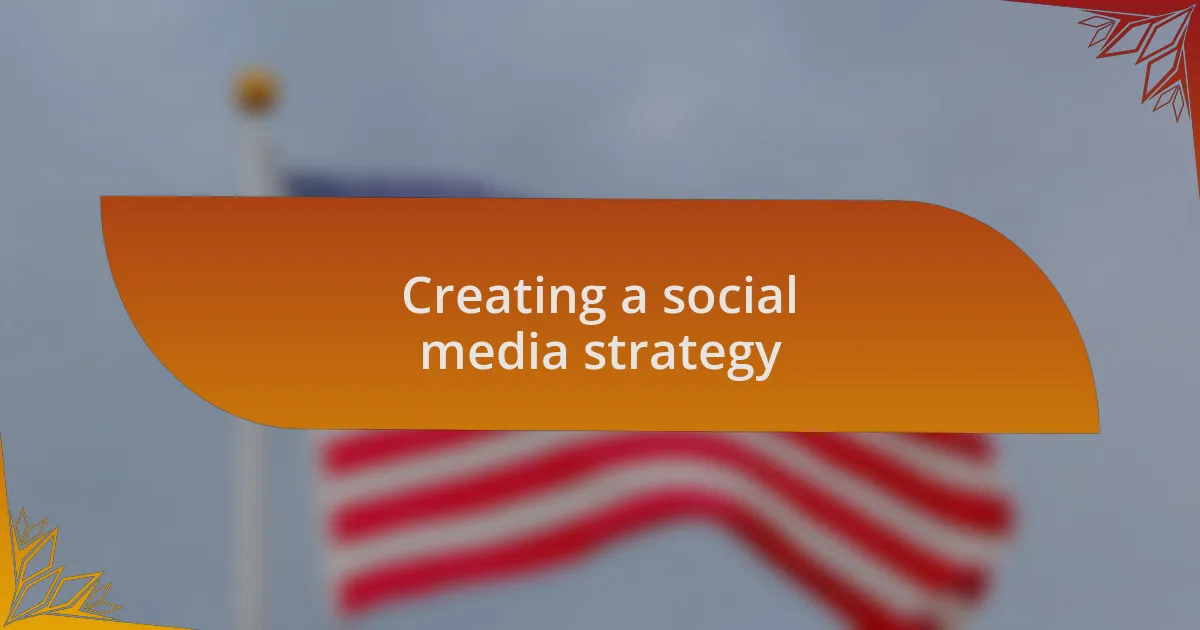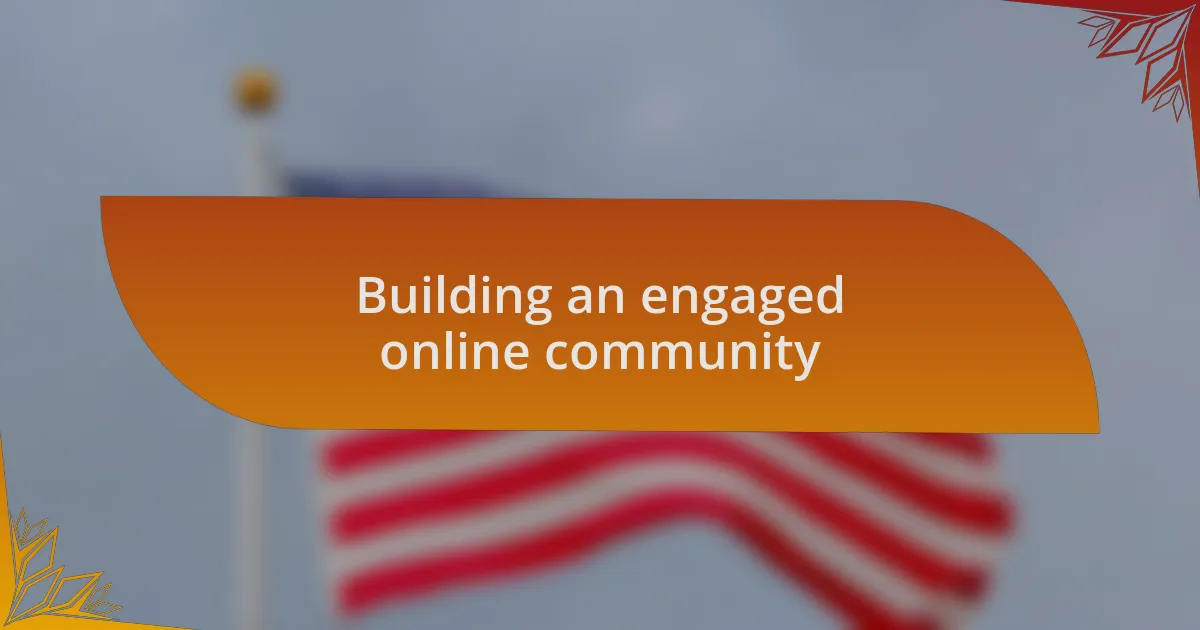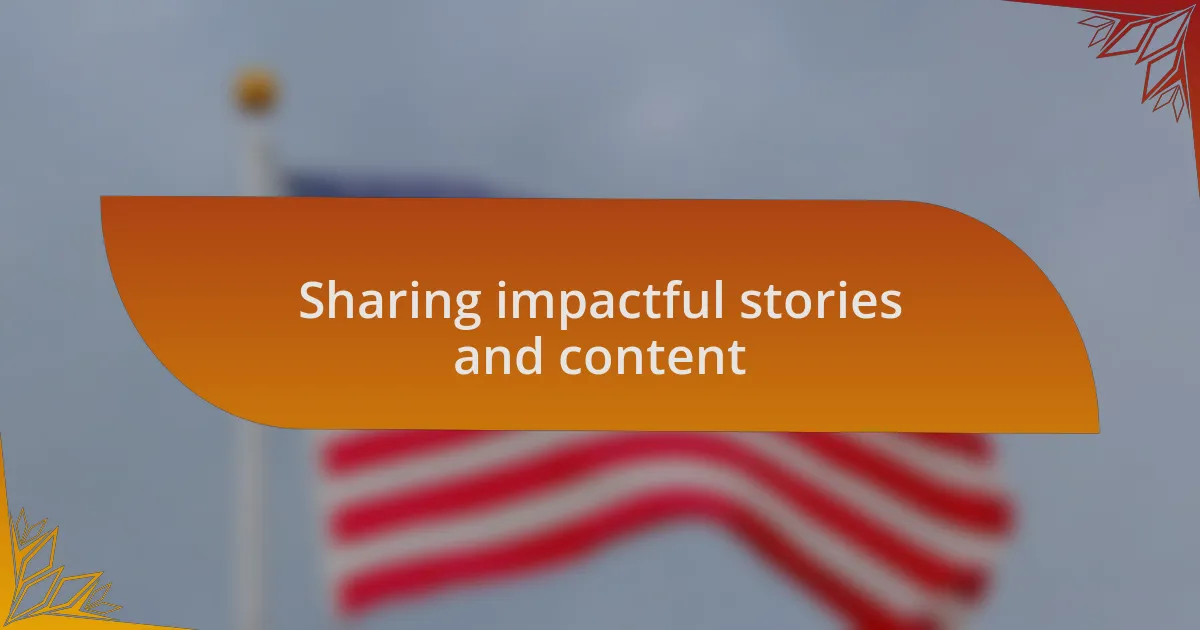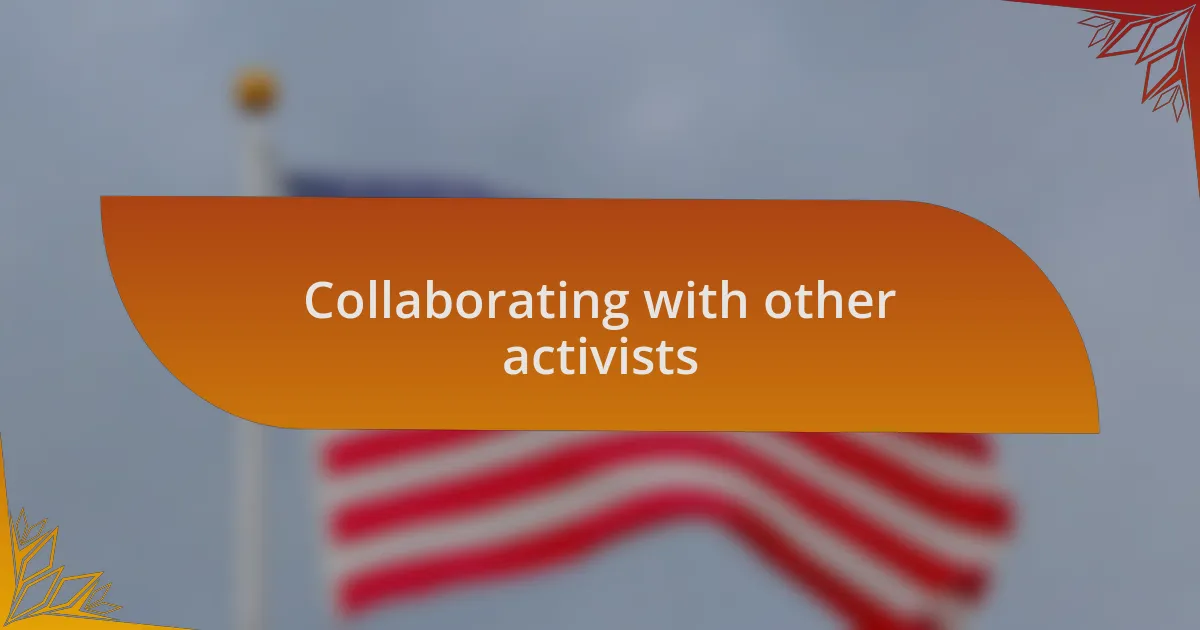Key takeaways:
- Reparations politics involves addressing historical injustices and fostering dialogue for a more equitable society.
- Social media serves as a powerful tool for activism, amplifying marginalized voices and facilitating community engagement.
- Building an engaged online community relies on fostering genuine connections, sharing personal stories, and recognizing community efforts.
- Collaborating with other activists enhances impact and encourages creativity through shared ideas and collective knowledge.

Understanding reparations politics
Reparations politics is a complex and often contentious issue that involves addressing the historical injustices faced by marginalized communities, particularly those affected by slavery and systemic racism. It raises questions about accountability, whether societies can or should compensate for past wrongs, and what form that compensation should take. When I first started learning about reparations, I felt a mix of hope and frustration—hope that change could come, but frustration over the slow progress.
In my experience, discussions around reparations can evoke strong emotions. Some see it as a necessary step toward justice and healing, while others view it as a divisive agenda. I remember attending a community meeting where the passion in the room was palpable; everyone had a story that underscored the urgency of this issue. How do we bridge the gap between different perspectives while acknowledging the pain of the past?
Working through these dynamics is crucial. Reparations politics isn’t just about financial compensation; it’s about recognizing historical injustices and creating equitable opportunities for future generations. When we engage in this dialogue, we must ask ourselves: how do we honor those who have suffered while building a more just society? That question isn’t just academic; it’s deeply personal for many of us striving for change.

The role of social media
The role of social media in activism cannot be overstated. I remember a time when a tweet or a post could rally thousands, highlighting injustices that often fly under the radar. Social media serves as a megaphone, amplifying voices that have been historically silenced. Have you ever felt the rush of connection when seeing a hashtag trend that mirrors your own beliefs? It’s a feeling of solidarity, knowing you’re part of something larger.
Platforms like Twitter and Instagram allow activists to share stories, resources, and calls to action in real time. I often find myself scrolling through feeds that not only inform but inspire me to get involved. One post can spark a movement, as I witnessed during a recent campaign advocating for reparations. A small group shared their personal narratives, and suddenly, a whole community sprang into action, showing just how powerful our collective voice can be.
Moreover, social media creates a space for dialogue that transcends geographical boundaries. I’ve engaged in discussions with people from various backgrounds, learning from their experiences and perspectives on reparations politics. Those exchanges can lead to profound understanding and mutual support. Isn’t it amazing how a simple comment or share can foster connections and inspire change? In my view, this interconnectedness is crucial as we push for justice and accountability in the ongoing fight for reparations.

Creating a social media strategy
Creating an effective social media strategy starts with identifying your goals. For instance, when I launched a campaign focused on raising awareness for reparations, I knew I needed to define success clearly. Was it more followers, engagement, or actually inspiring activists to join in? Reflecting on these questions shaped my approach.
Next, I suggest targeting platforms that resonate with your audience. I once focused exclusively on Twitter, but soon realized that Instagram’s visual storytelling could capture more hearts and minds. Exploring where your potential supporters congregate helps ensure your messages lands effectively. Have you ever noticed how certain posts seem to ignite a spark? That’s often about understanding your audience’s habitat.
Finally, consistency is key. I’ve learned that regular posting not only keeps your cause on people’s radar but builds trust and authenticity. I once committed to a series of “Did You Know?” facts about reparations on my platforms, and the response was overwhelmingly positive. Do you think this continuous engagement helps in sustaining momentum? From my experience, it certainly does—a steady presence can make all the difference in a campaign.

Building an engaged online community
Building an engaged online community is all about fostering genuine connections. I recall a time when I hosted a live Q&A session on reparations, and the flood of questions was both exciting and eye-opening. It reaffirmed my belief that when people feel they can voice their concerns and curiosities, they become more invested in the cause. Have you ever participated in a discussion that made you feel truly heard? It can be a powerful motivator.
Encouraging dialogue is essential, and I’ve found that sharing personal stories invites others to do the same. When I posted about my own family’s history related to systemic inequalities, I was amazed at how many others stepped forward with their stories. It created a sense of solidarity and trust within the community, making them more likely to engage in activism together. Isn’t it fascinating how vulnerability can strengthen the bonds we share?
Additionally, I believe that acknowledging your community’s efforts is crucial. I often take the time to highlight individuals who are making strides in the movement, whether through social media shout-outs or celebrating their achievements in my posts. This simple act of recognition often sparks further engagement and inspires others to contribute. It fuels a cycle of support that can propel the movement forward. How do you celebrate the contributions of your community? Finding ways to uplift others can transform the online space into a vibrant ecosystem of activism.

Sharing impactful stories and content
Sharing impactful stories is a vital part of using social media for activism. I remember when I came across a post detailing a survivor’s experience with systemic injustice. The raw emotions and courage expressed resonated deeply with me, prompting me to share it with my followers. It sparked a much-needed conversation that opened people’s eyes to realities they might not have considered. Have you ever read a story that changed your perspective? It’s incredible what a single narrative can do.
Content that strikes an emotional chord not only informs but also compels others to act. One time, I shared a video of a peaceful protest that highlighted the unity and strength of the reparations movement. The comments flooded in—people sharing their thoughts, experiences, and even their own video clips. It was amazing to see how one piece of content could galvanize so many voices into action. What stories have you found that ignite passion within you?
Moreover, I actively seek out and collaborate with storytellers from diverse backgrounds to amplify their voices. This approach strengthens our collective narrative and enriches our understanding of reparations. When I featured a local artist who uses their platform to create compelling narratives through art, it not only broadened my audience but also sparked new ideas for community engagement. It’s a beautiful reminder that every voice matters. How can you weave more stories into your activism? Finding those unique perspectives can breathe new life into our shared mission.

Collaborating with other activists
Collaborating with other activists is an essential aspect of amplifying our message and impact. I recall a time when I partnered with a group organizing an online series of webinars focusing on reparations. Each session brought together passionate individuals from different areas of expertise, allowing us to exchange ideas and leverage our collective knowledge. Have you ever felt the synergy that emerges when like-minded people unite for a common purpose? It’s truly electric.
In the digital age, our collaborations can reach far beyond physical boundaries. I joined forces with activists from various states, and together we launched a hashtag campaign that trended nationally. As we shared each other’s insights, it felt empowering to elevate those often overlooked in the reparations narrative. When have you collaborated with others to amplify an important cause? Reflecting on those experiences can remind us of our potential when we come together.
When working with fellow activists, I’ve learned the importance of establishing strong, trust-based relationships. These connections not only foster a supportive atmosphere but also encourage creativity and innovation. I often find myself discussing strategies over coffee chats or virtual meetings, brainstorming new ways to engage our audience. What if we all took the time to nurture these collaborations? Imagine the creative solutions we could find by opening up our circles to new influences.